

 | International Journal of Mental Health Promotion |  |
DOI: 10.32604/ijmhp.2022.016671
ARTICLE
Public Square Dancing Intervention on Subjective Well-Being of Middle-Aged and Elderly People: A Meta-Analysis
1Physical Education Institute, Hunan First Normal University, Changsha, 410205, China
2Wuhan Sports University, Wuhan, 430079, China
*Corresponding Author: Menglong Li. Email: lml0713@yeah.net
Received: 16 April 2021; Accepted: 20 August 2021
Abstract: Objective: To understand the influence of public square dancing on the subjective well-being of middle-aged and elderly people. Methods: According to the principle of Preferred Reporting Items for Systematic Reviews and Meta-Analyses (PRISMA) guidelines, we search Chinese databases, such as CNKI, Wanfang Data, and VIP, and English databases, such as Proquest, Web of Science, Pubmed, Cochrane, and ScienceDirect, and collect relevant articles at home and abroad from 2006 to December 2019 for meta-analysis in January 2020. Result: A total of 10 articles were included. The meta-analysis results showed that the well-being of middle-aged and elderly people in the public square dancing intervention group was significantly higher than that of the other exercise group and control group (both P < 0.01). The results of the subgroup analysis showed the following: Different durations of intervention significantly influence the intervention effect (P < 0.01). No difference was found between the effect of the mixed-gender intervention and the individual female intervention (P > 0.05). No significant difference was found between the groups with weekly intervention frequency (P > 0.05). Conclusion: Public square dancing intervention is effective for middle-aged and elderly people’s subjective well-being. Neither mixed intervention nor the times of weekly intervention have an impact on the intervention effect. However, the length of duration of intervention influences the intervention effect.
Keywords: Middle-aged and elderly people; subjective well-being; meta-analysis; square dancing
With the reduction of the fertility rate, improvement of medical and health conditions, and continuous extension of life expectancy, population aging has become one of the major issues and an irreversible phenomenon confronted globally. Human beings will face the challenge of population aging for quite a long time [1]. The global population aged 60 or over is projected to expand, reaching nearly 1.1 billion people by 2025 and 2 billion people by 2050 [2]. As the age of elderly people increases, their health problems become more prominent. One of the major concerns that need to be addressed urgently is paying attention to the health of middle-aged and elderly people and helping them better adapt to the troubles brought by aging. As population aging further speeds up, physical and psychological health problem of middle-aged and elderly people is no longer a personal problem but a social issue that affects social development [3]. Many middle-aged and elderly people are faced with stress from various aspects. On the one hand, many middle-aged and elderly people have to shoulder the responsibility of looking after their elders; on the other hand, they bear the important mission of educating children and even providing “inter-generational education” [4]. Previous research has shown that the physical and psychological health of Chinese middle-aged and elderly people is not optimistic; their overall satisfaction is lower than the rest of the national population [5]. When an individual enters the middle-aged and elderly period, the research indicates that various physiological systems will decline, thus leading to the degeneration of psychological functions and reducing subjective well-being of midge-aged and elderly people [6]. Subject well-being (SWB) is an important comprehensive psychological index to measure individual psychological health levels, reflecting the overall perception and affective evaluation for living quality [7]. SWB as a significant index can reflect the individual overall living quality and psychological health status. Existing studies show that SWB can directly influence the prognosis of patients at home [8], and it is closely related to sleep quality [9], negative emotion [7], coping style [10], and chronic disease [11] prevention and treatment. Therefore, investigating intervening measures for SWB of midge-aged and elderly people can effectively prevent and relieve their psychological health problems and improve their living quality. It is of great research significance and has been a hotspot of relevant research.
Physical exercise contributes to improving the cognitive function of the human body and enhancing human happiness level. Research has shown that participating in regular physical activities is a requirement for a happy life for elderly people [12,13]. Some relevant studies reveal that active participation in social activities and leisure sports is crucial for elderly people to keep a positive emotional state [14]. Bae et al. [15] found that participation in leisure sport positively correlates with the life satisfaction of elderly people. Square dancing is considered a leisure sport and a social activity. It has become well-known because people mostly gather in public squares. Square dancing integrates self-entertainment and performance, and its main performing form is group dancing, with the main purpose of bodybuilding, including health dance, folk dance, street dance, and Latin dance. It is characterized by simple movements, lively rhythm, and easiness [16]. Square dancing is a spontaneous and rhythmic dance on squares, courtyards, and other open spaces with the purpose of fitness, usually accompanied by finger-popping music accompaniment. Chinese scholars think that square dancing is a social activity and a social phenomenon [17]. Wang combined the opinions of numerous scholars and considered square dancing as a spontaneous and uniform activity on squares accompanied by music intended for mass bodybuilding, self-entertainment, and making friends [18]. The main participants of square dancing are middle-aged and elderly people, most of whom are women. They usually hold it from 7 pm to 8 pm after supper, when middle-aged and elderly people have completed daily housework or daily work. The original purpose is to have sufficient exercise after supper and realize bodybuilding and shaping [19]. Middle-aged and elderly people can achieve communication, exchange, and fitness through square dancing. Square dancing has the advantage of collectivity and communication, and it is deeply favored by middle-aged and elderly people [20].
At present, square dancing as a nationwide fitness campaign of grassroots people has rapidly developed in recent years and become an indispensable activity in China’s urban and rural culture. In the National Fitness Program (2016–2020) [21] issued by the State Council, square dancing is recommended as a key program. The benefit of square dancing for the physical and psychological health of middle-aged and elderly people has attracted extensive research attention. Square dancing effectively helps middle-aged and elderly people control body weight, shape the body, and further invigorate health [22,23]. It also improves their cognitive function and memory capacity [24], lowers their negative emotions, such as aloneness, depression, and anxiety; enhances self-value; and promotes self-efficacy [25]. Wu et al. found that the organizational climate of square dancing could significantly facilitate SWB of elderly people and could be mediated by organizational identity and self-esteem [26].
Although the existing studies propose that square dancing can promote SWB of middle-aged and elderly people, the following problems have emerged in current research. First, single research and correlation analysis cannot prove well whether the promotion effect of square dancing on SWB of middle-aged and elderly people exists. Second, the experimental study can reflect whether square dancing intervention can improve the SWB of middle-aged and elderly people. However, perceptual comparison cannot be achieved because of varying objects of study, intervention procedures, and durations of intervention. Therefore, we carried out the meta-analysis of the relation between square dancing and SWB of Chinese middle-aged and elderly people to provide a scientific basis for effectively intervening SWB of middle-aged and elderly people and improving their health level and quality of life. We also expect to provide a new reference perspective for supporting elderly people in developing countries and population aging.
According to the Preferred Reporting Items for Systematic Reviews and Meta-Analyses (PRISMA) principle for meta-analysis, Chinese databases, such as CNKI, Wanfang Data, and VIP, and English databases, such as Proquest, Web of Science, and ScienceDirect, were searched to collect relevant domestic and overseas articles on square dancing and well-being from 2006 to 2019. The search was based on the keywords “Square dance, subjective well-being (including its free words: well-being, quality of life, life satisfaction, positive emotion, negative emotion, positive emotion, negative emotion), the elderly (including its free words: elderly women, middle-aged, and elderly people)” and English keywords “Square dance, subjective well-being (including its free words: well-being, quality of life, life satisfaction, positive emotion, negative emotion, positive emotion, negative emotion), and the elderly (including its free words: elderly women, middle-aged, and elderly people)”. The search time is January 2020.
We preliminarily searched 195 articles, including 177 Chinese articles and 18 English articles. After the repeated articles were eliminated, 168 were reserved, out of which 140 were excluded in the preliminary screening process (reading titles and abstracts), and 28 were reserved. After the strict screening, 18 articles were left. Finally, 10 articles were included, all of which are Chinese articles. The details are shown in Fig. 1.
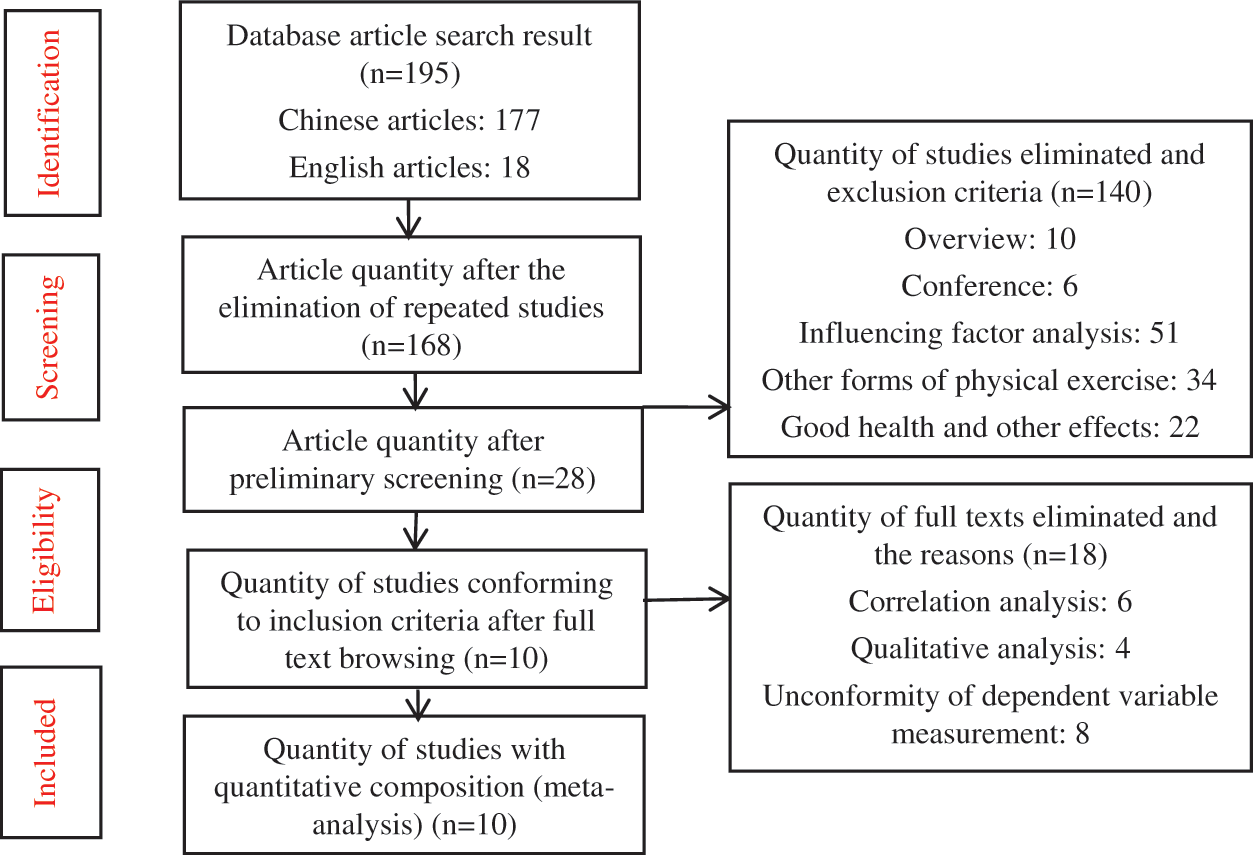
Figure 1: PRISMA flow diagram of study selection
The article inclusion criteria are as follows: (1) the type of article is the control design of randomized experimental group and control group; (2) the objects of study are middle-aged and elderly people (above 40 years old); (3) the scales used for dependent variable measurement at least include one of the following scales: general well-being scale (GWB), well-being index scale (WHO-5), the MOS item in the Short Form 36 Health Questionnaire (SF-36), the Memorial University of Newfoundland Scale of Happiness (MUNSH), World Health Organization Quality of Life-BREF (WHOQOL-BREF); (4) the article reports original data, including the sample size of the experimental and control groups, mean value and standard deviation after the intervention; (5) the report is not repeated. The exclusion criteria are the same study, data repetition, and cross-sectional investigation.
The title information searched from each database was uniformly imported into NOTEEXPRESS to eliminate repeated articles automatically. Then, two researchers screened articles independently according to the inclusion and exclusion criteria, rejected disqualified articles through reading titles and abstracts, and further read the full texts of articles that might conform to requirements. The researchers needed to develop an EXCEL sheet to extract data, including author, year of publishing, experiment characteristics, and dependent variable measurement.
2.4 Quality Evaluation for Articles Included
Jadad rating scale was used to evaluate the quality of papers effectively, with seven total marks [27]. The content includes the following: (1) the generation of random sequences, (2) randomized hiding, (3) blind method, and (4) whether the subjects who quitted were handled or described. During the evaluation, the author, organization, and periodical on which the paper is published were hidden. Marks 1–3 indicate low quality, and marks 4–7 indicate high quality. Quality evaluation results showed the Jadad score of 10 articles was 1–5. Among the 10 articles, two did not mention randomization, a half mentioned the blind method, and only three mentioned the quitting problem of subjects. In general, the article quality was medium and above.
In this study, stata16.0 was used for statistical analysis. Standardized mean difference (SMD) and 95% confidence interval were chosen as the effect sizes for combined analysis. According to the result of the heterogeneity test, the random effect model was selected to combine the effect sizes [28]. x2 test combined with I2 value was adopted for quantitative analysis of heterogeneity, and subgroup analysis was employed to discuss the source of heterogeneity further. In the end, Egger’s method was used to test the publication bias. Among all methods, P < 0.05 was considered as a statistical significance standard [29].
3.1 Basic Features of Articles Included
This study included 10 articles dating from 2014 to 2019. The total sample size was 1296, including 556 in the intervention group, 86 in the other exercise group, and 654 in the control group. The subjects include 112 males and 1136 female. One article did not report the gender situation. The duration of intervention ranged from 8 weeks to 24 weeks. The intervention frequency was 3–7 times per week. The intervention time per time was more than 40 min. See Table 1 for details.

First, the random effect model was adopted to analyze the well-being scores of middle-aged and elderly people in the square dancing intervention and control groups. The result showed that the SMD had statistical significance (Z = 4.17, P < 0.01), indicating that the combined effect sizes in this study are significant. The well-being of middle-aged and elderly people in the square dancing intervention group was significantly higher than that of the control group. Meanwhile, the random effect model was used for the heterogeneity test of 10 papers included, and the result showed (as shown in Fig. 2) I2 = 96.36% (P < 0.01), suggesting a large heterogeneity between the square dancing intervention group and the control group.
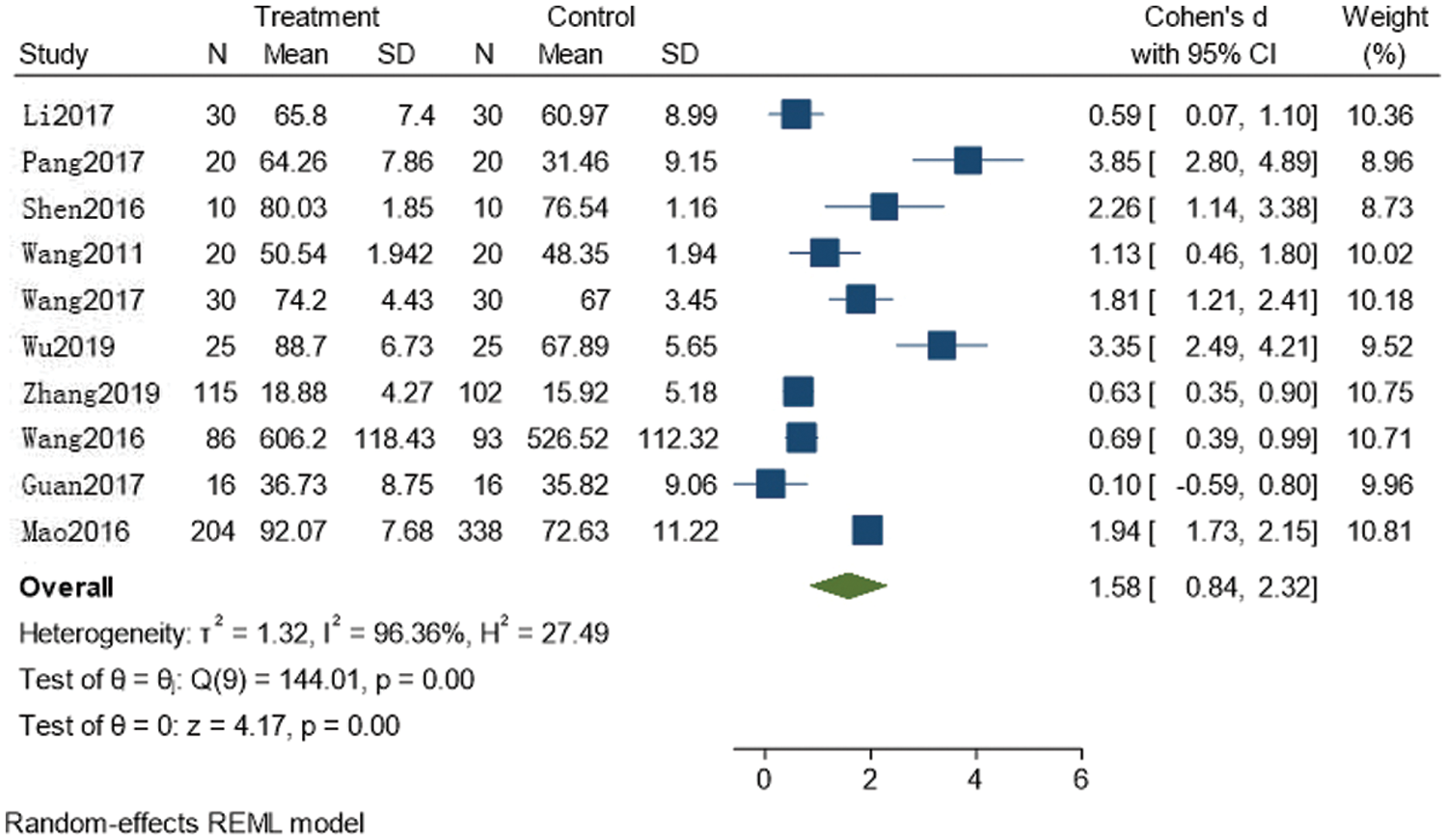
Figure 2: Variation analysis of square dancing intervention group and control group by random effect model
Second, the random effect model was employed to analyze the well-being scores of middle-aged and elderly people in the square dancing intervention group and the other exercise group. The result showed that SMD had statistical significance (Z = 1.91, P < 0.05), revealing that the combined effect sizes in this study are significant. The well-being of middle-aged and elderly people in the square dancing intervention group was significantly higher than that of the other exercise group. Meanwhile, the random effect model was used for the heterogeneity test of 4 papers included, and the result showed (as shown in Fig. 3) I2 = 85.51% (P < 0.01), also suggesting a large heterogeneity between the square dancing intervention group and the other exercise group.
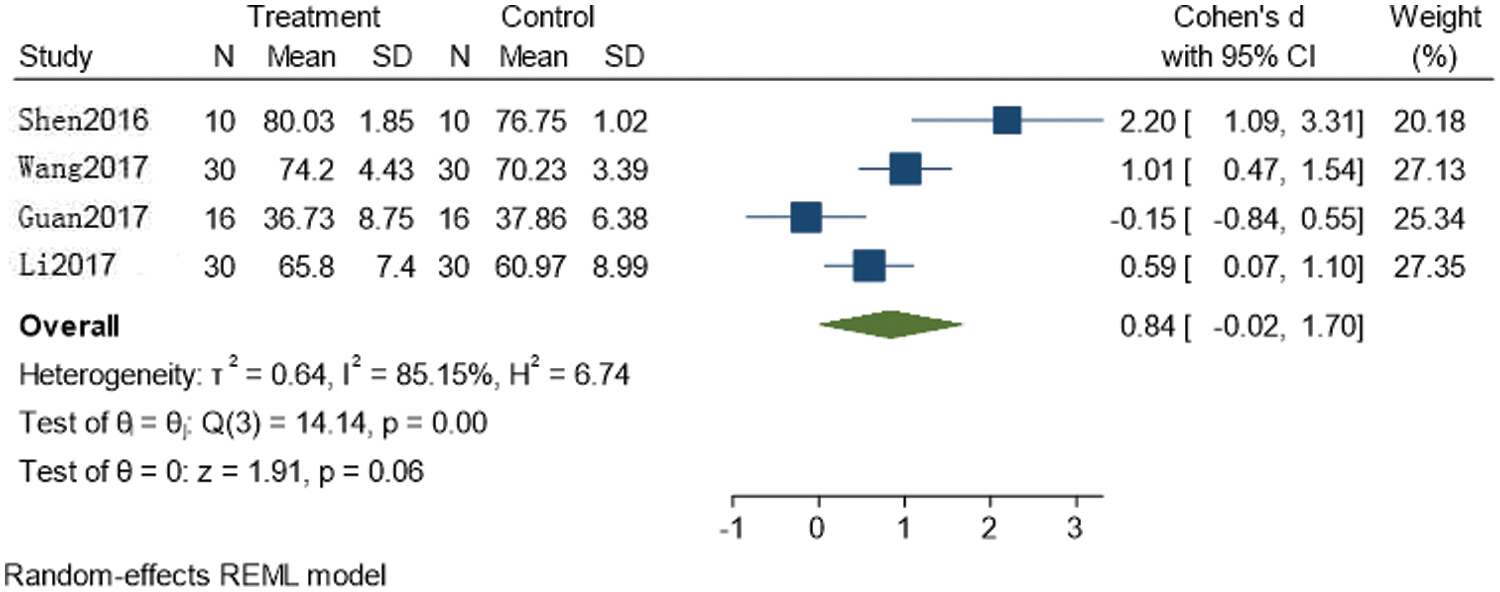
Figure 3: Variation analysis of square dancing intervention group and other exercise groups by random effect model
Among the 10 articles included, the objects of intervention were classified into two types: the objects including both men and women and the objects including women only. According to the two types, subgroup analysis was conducted. For the mixed-gender group, I2 = 77.10%. For the individual female group, I2 = 96.36%. Therefore, the heterogeneity of each subgroup is high, but the effect size test of the mixed-gender group and the individual female group had no significant difference, as shown in Fig. 4.
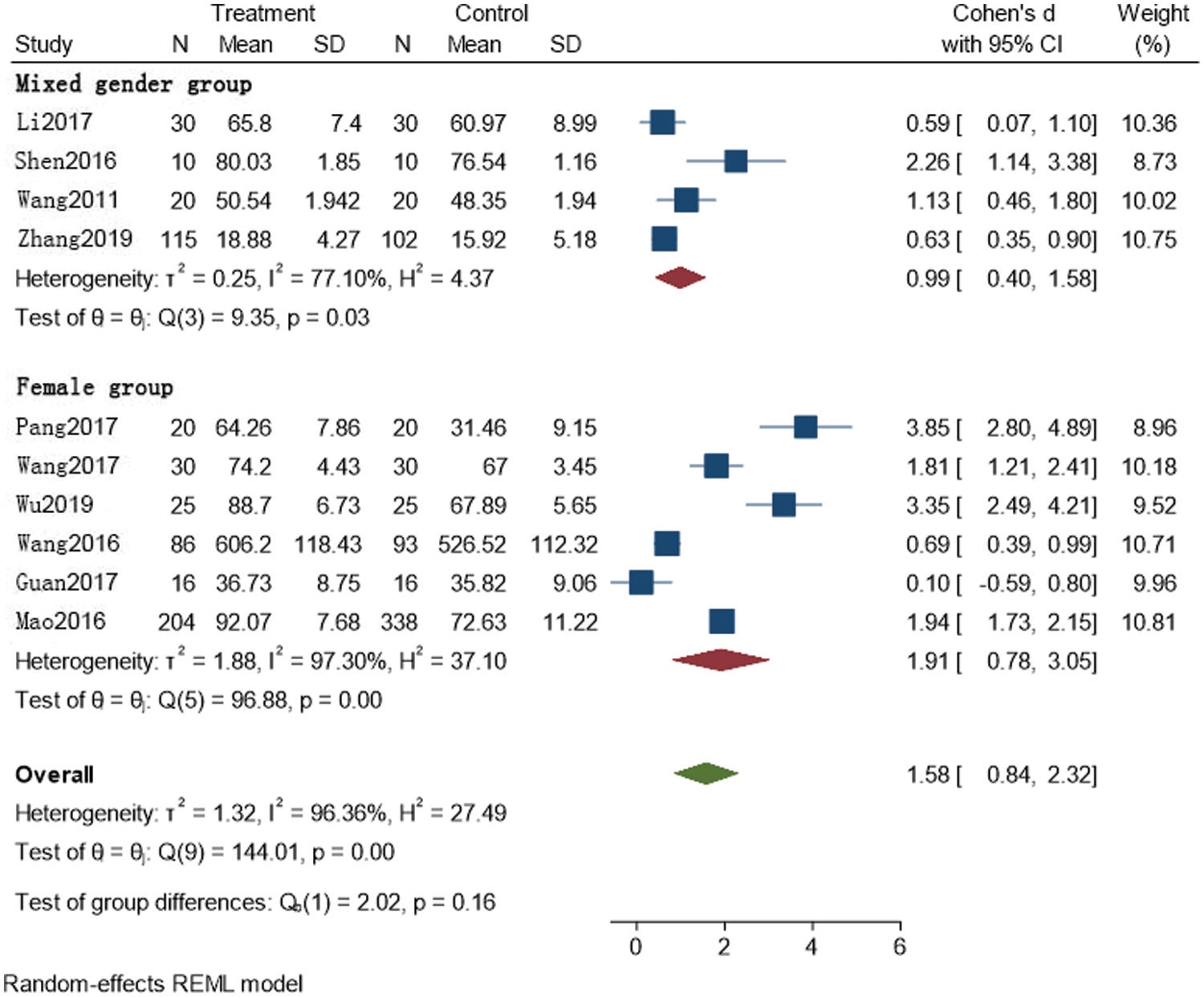
Figure 4: Variation analysis of mixed gender intervention group and individual female intervention group
Among the 10 studies included, the duration of intervention was classified into four types: 8, 9, 12, and 24 weeks. Given that two studies involve eight and nine weeks, they were combined as the below nine weeks group. Subgroup analysis was carried out. For the below nine weeks group, I2 = 0%, indicating the heterogeneity is very small. For the 12 and 24 weeks groups, I2 = 82.64% and I2 = 96.84%, respectively, demonstrating large heterogeneity. I2 = 96.36% reveals large heterogeneity of studies in general, but the effect size test among different duration of intervention had significant differences, suggesting that the duration of intervention may be an important cause for different intervention effects, as shown in Fig. 5.
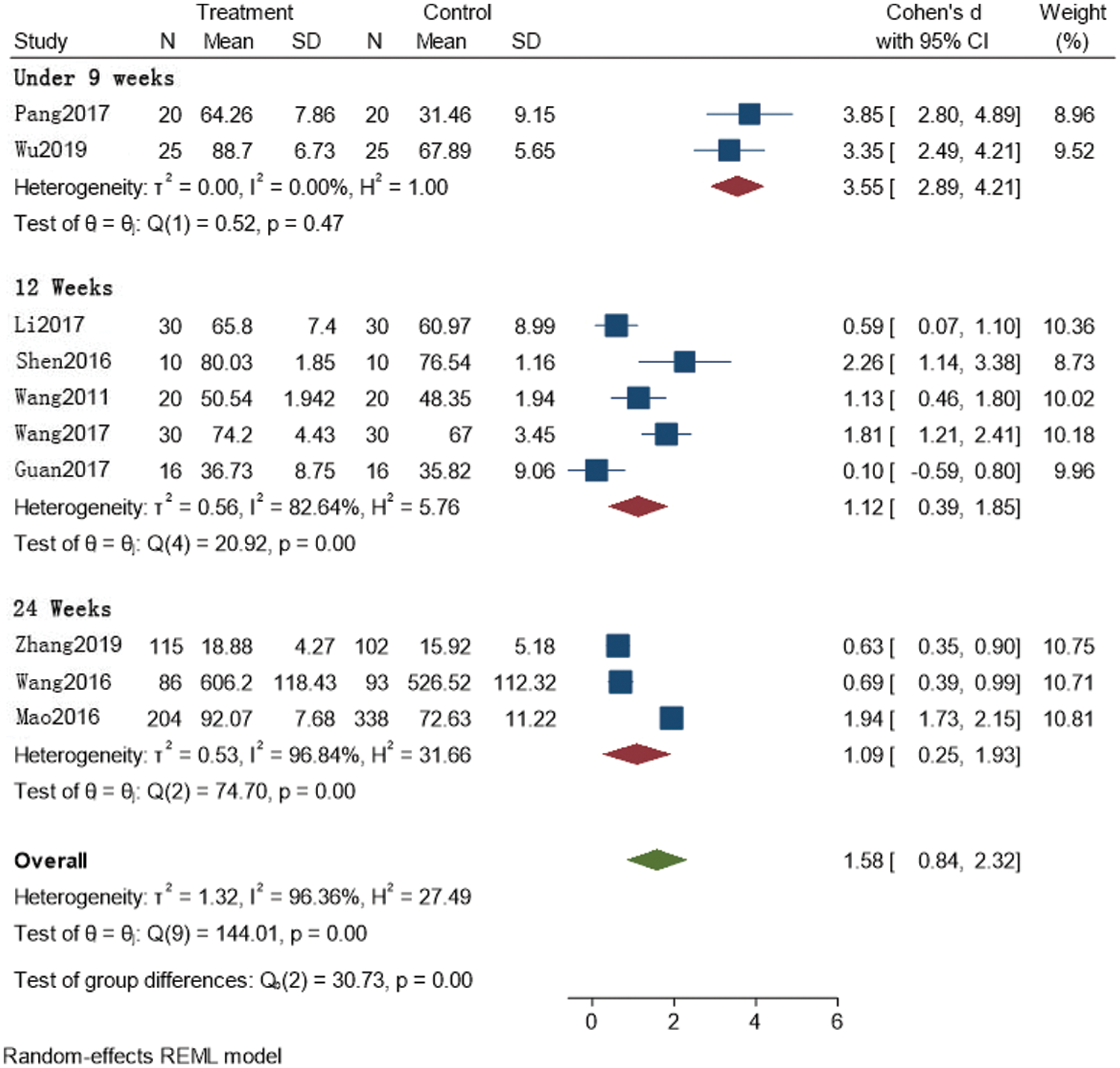
Figure 5: Variation analysis of intervention effect of different duration of intervention
Among the 10 studies included, the weekly intervention frequencies were classified into two types: three times per week and four or seven times per week. Given that only one article involves seven times per week intervention, four and seven times per week interventions were combined as four times or above per week intervention. According to the two types, subgroup analysis was carried out. For the group of three times per week, I2 = 96.69%; for the group of 4 times or above per week, I2 = 95.70%; total I2 = 96.36%, indicating that the heterogeneity of each subgroup is high, but the effect size test among different weekly intervention frequencies had no significant difference, as shown in Fig. 6.
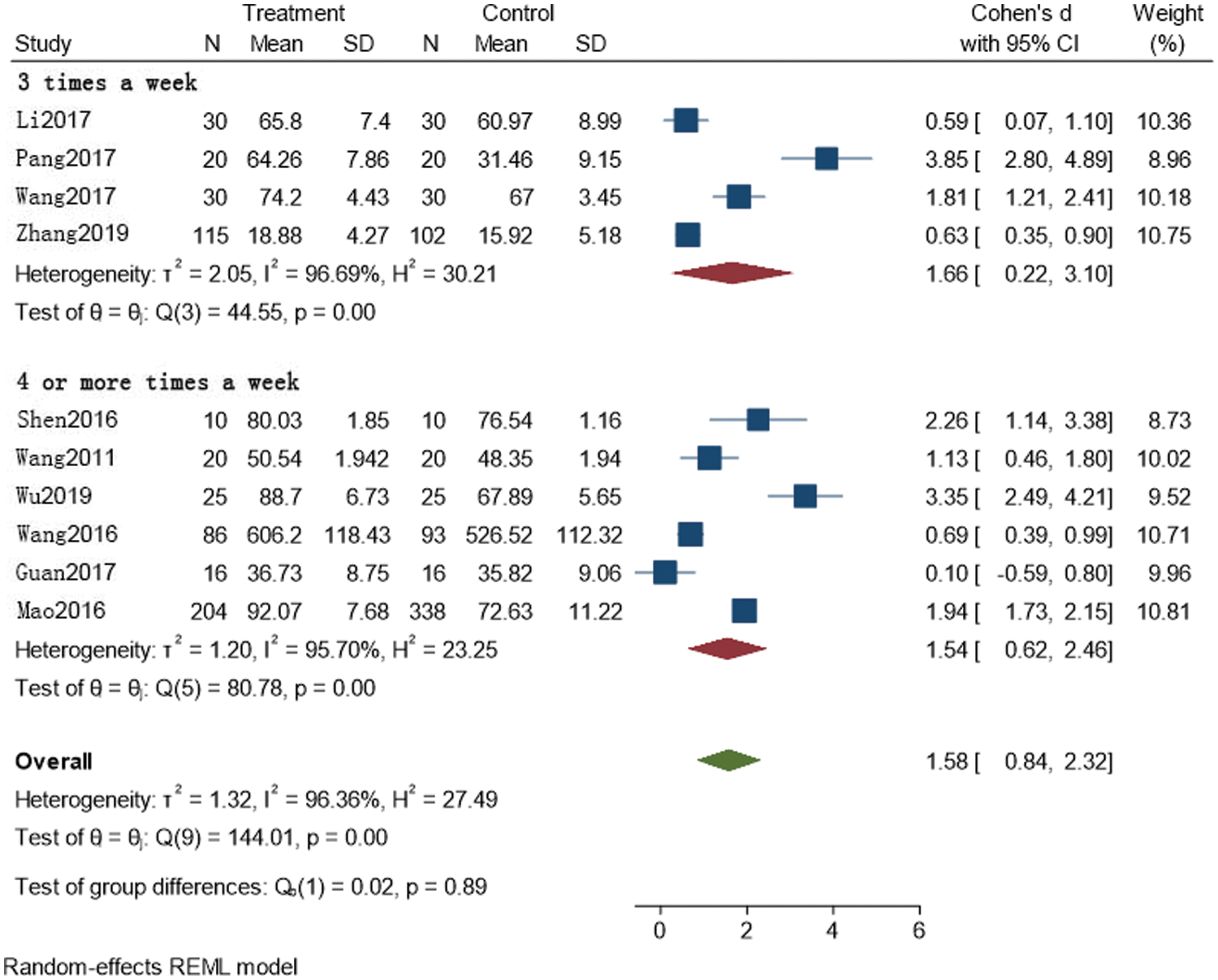
Figure 6: Variation analysis of intervention effect of different weekly intervention frequencies
The 10 studies included were eliminated one by one for sensitivity analysis, showing that the resulting stability of this meta-analysis is good, as shown in Fig. 7.
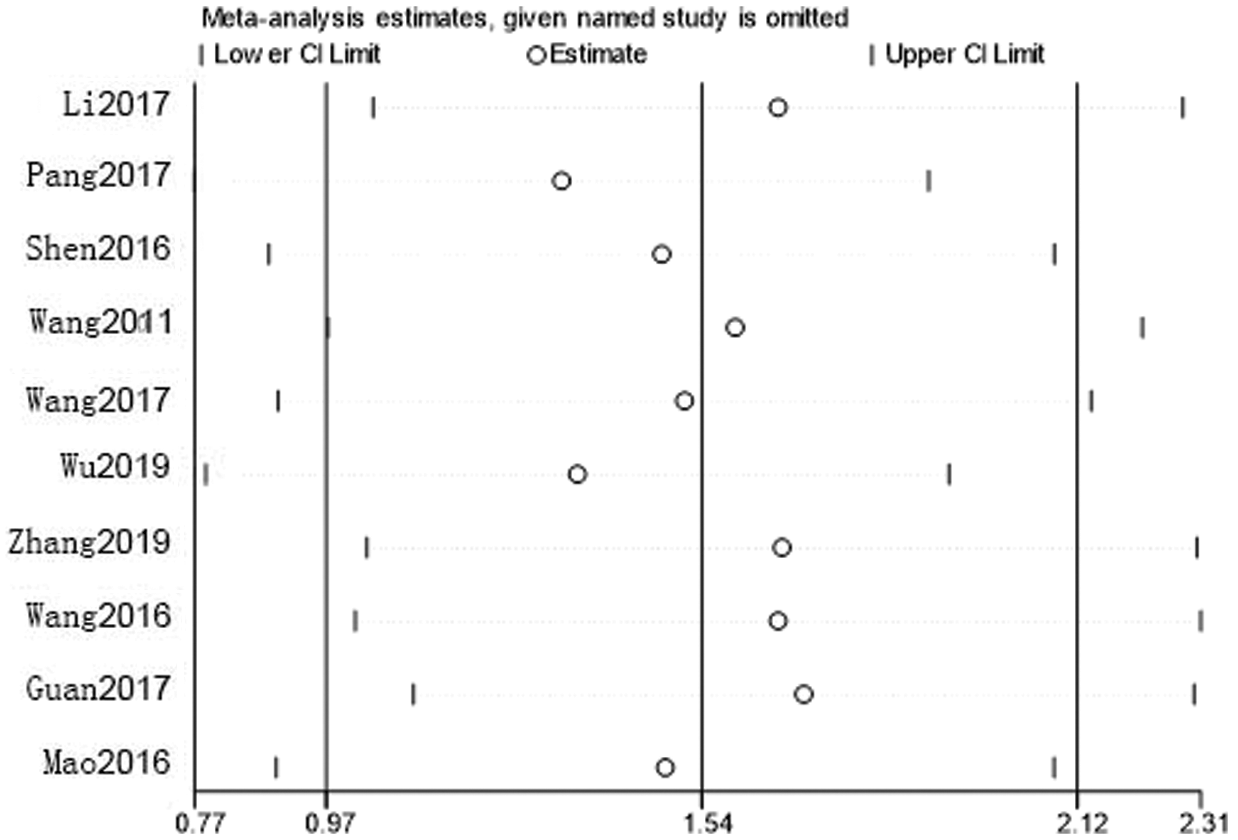
Figure 7: Sensitivity analysis result
Egger’s test statistics of publication bias t = 2.08, P = 0.07, indicating that the influence of publication bias on meta-analysis had no significant difference, as shown in Fig. 8.
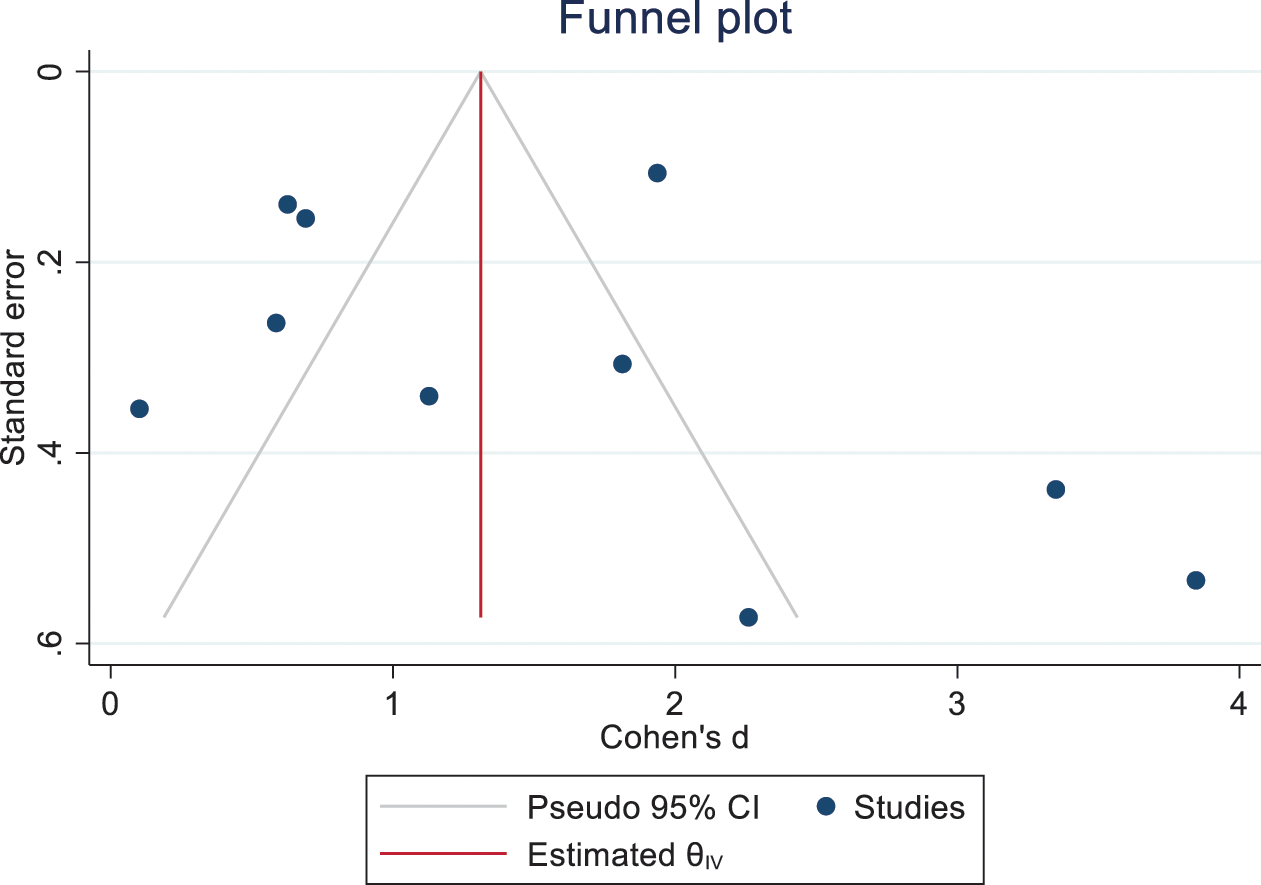
Figure 8: Funnel plot of publication bias
This study is the first meta-analysis on whether square dancing can improve the SWB of middle-aged and elderly people in China. As a popular, collective, and simple activity form, square dancing improves SWB of middle-aged and elderly people and contributes to promoting social stability and harmony. According to the viewpoints of relevant studies, SWB is also called “health-related quality of life”, and its measurement includes general quality of life and specific field satisfaction [40]. Hence, the measurement of SWB is classified into two categories: the first category is the scales used to measure well-being, mainly including (1) GWB directly. This scale was prepared by National Center for Health Statistics, with good reliability and validity, and it has been proven to have cross-culture adaptability. Chinese scholar introduced this scale to China and used the first 18 questions as the test questions to evaluate the statement of middle-aged and elderly people on well-being [41,42]. (2) WHO-5. This scale was developed by WHO, including five items. It has been verified to have good reliability and validity among middle-aged and elderly people in China [43,44]. (3) MUNSH. The scale includes 24 items, involving four dimensions: positive emotion, negative emotion, positive experience, and negative experience. It is more comprehensive, reliable, and valid [38,45]. The other category of scales used to measure SWB is dominated by the measurement of “health-related quality of life”, which measures the general quality of life or the life satisfaction of middle-aged and elderly people. The common scales contain (1) the MOS item of SF-36, which is used to measure specific satisfaction. This scale includes 36 questions, which are used to investigate the situations of middle-aged and elderly people in eight aspects, including physiological function, social function, psychological health, vitality, and emotional function. It has been proven to have good reliability and validity [37,46]. (2) WHOQOL-BREF. The scale contains 26 items, including the fields of victory, psychology, social relations, and environment. The higher the score, the higher the quality of life of middle-aged and elderly people [39]. Based on the strict screening standards, 10 qualified studies with good quality were included to analyze whether square dancing could improve the SWB of middle-aged and elderly people and the influencing factors. According to the analysis results, the results of this study have good stability, without publication bias.
4.1 Promotion of Square Dancing on SWB of Middle-Aged and Elderly People
First, the 10 studies included compared the SWB differences between the square dancing intervention group and the control group. The results showed that the heterogeneity of 10 studies was high, but the combined effect size had significant meaning. Square dancing played an obvious promotion role for SWB of middle-aged and elderly people. This result is consistent with the single research result of Wang [37] and Mao et al. [39]. Physiological health is the foundation of SWB of middle-aged and elderly people. The reason why square dancing can enhance SWB of the elderly is inseparable from the physical exercise nature of square dancing. Although the movements of square dancing are simple, their exercise range and intensity conform to exercise standards of the elderly [47]. For the elderly who are physically and mentally healthy and those with some diseases who can still take exercise, square dancing is suitable for exercise, and long-term participation contributes to improving their health level [48]. In other words, square dancing exercises can facilitate the physical and psychological health of the elderly. Square dancing indirectly influences the SWB of middle-aged and elderly people by improving their physical quality and physiological health.
Second, we further investigated the differences in the intervention effect between square dancing and other physical exercise types, such as running, playing ping pong, walking with vigorous strides, and five-animal boxing. The result indicated that the promotion effect of square dancing on boosting SWB of middle-aged and elderly people was better than that of other physical exercise types, suggesting that square dancing has its uniqueness and an irreplaceable advantage over the improvement of SWB of middle-aged and elderly people, compared with other physical exercise types [25]. Following Socioemotional Selectivity Theory, social interaction is an indispensable part of individual life. As age increases, personal social goals mostly turn to emotion regulation goals, such as seeking the meaning of life, gaining a sense of intimacy, and self-actualization [49]. Square dancing is not merely a kind of sport but also a collective activity for the elderly. Research has shown that the elderly who often take part in square dancing have a higher quality of interpersonal relationships [50] Middle-aged and elderly people enhance their physical qualities when they actively participate in square dancing and achieve their emotion regulation goals through this collective activity, thus improving their SWB.
First, we analyzed whether differences existed in different intervention objects and found that the promotion effect of square dancing on SWB had no significant difference between the mixed-gender group and individual female group. This result reveals that square dancing is universally applicable and is an activity that people of all ages and genders can accept [51,52]. The different effects of square dancing on men and women’s physical and psychological health can be more carefully explored in future studies. Second, we conducted a subgroup analysis of different durations of intervention and found that the effect size test was significant among different duration of intervention, demonstrating that the duration of intervention may be an important cause for different intervention effects. The longer the duration of intervention, the better the intervention effect; that is, a longer time of participation in square dancing will bring a more obvious promotion effect on the well-being of middle-aged and elderly people. Based on the subgroup analysis of weekly intervention frequencies, the result of three interventions per week had no significant difference from the effects of four and seven interventions per week. The two results suggest that the total time of participation in square dancing rather than weekly participation times plays a role in improving the well-being of middle-aged and elderly people. This point was not found in previous studies. Kim et al. [53] indicated that the change gained by the elderly people from the exercise rather than exercise intensity was important, and such change took place slowly. Square dancing is a physical exercise activity suitable for the elderly and a recreational activity that can enhance physical and psychological health and improve the well-being of middle-aged and elderly people. However, its effect exertion and its influence on individual cognition and emotion occur slowly [54]. This result also reminds us that a long-time follow-up study can be designed to investigate the relationship between square dancing and the well-being of middle-aged and elderly people deeply.
To sum up, the following conclusions were drawn in this study: (1) Square dancing intervention is an effective intervention method for middle-aged and elderly people’s subjective well-being. The effect of the intervention group is better than that of other exercise intervention groups. (2) Regardless of mixed intervention or individual female intervention, no significant difference is found in the intervention effect. (3) The weekly intervention frequency has no impact on the intervention effect. (4) The length of duration of intervention influences the intervention effect. This study verifies that square dancing is indeed a collective bodybuilding exercise worth promoting and beneficial to enhancing the SWB of middle-aged and elderly people. Thus, it can be considered as one of the programs to intervene clinically in middle-aged and elderly people’s psychological problems. Suitable intervention measures should be set when adopting square dancing to intervene in the SWB of middle-aged and elderly people. For example, when designing movements of square dance, improvement of male participants’ enthusiasm, scientific development of the supervision method of the square dancing duration of intervention, and sthe etting of the exercise time of square dancing should be considered to develop and utilize the advantage of square dancing in psychological health intervention of middle-aged and elderly people.
This study has some limitations. First, the quality of the data used in this study depends on the accuracy and quality of the data obtained from the articles included. However, this study included only a small number of articles because of strict inclusion and queuing criteria. Therefore, more high-quality articles should be included in future research to make the conclusion more convincing. Second, the studies included were all carried out in China. Therefore, the effect on more national samples is still unknown. Aging is a global concern. Square dancing has been proven to be an effective exercise to promote the physical and mental health of the elderly. The limited sample from other nations has a particular impact on the universality of the effect of this exercise. Therefore, applying this approach and testing its effect on samples from more countries is necessary.
Funding Statement: This study was funded by Hunan Provincial Natural Science Foundation of China (Grant No. 2019JJ50095) from Yujia Ren.
Conflicts of Interest: The authors declare that they have no conflicts of interest to report regarding the present study.
1. Lu, J. H., Guo, R. (2016). From new national conditions to new national policies: Strategic reflections on actively responding to population aging. Journal of Chinese Academy of Governance, 39(5), 27–34, 141–142. DOI 10.3969/j.issn.1008-9314.2016.05.004. [Google Scholar] [CrossRef]
2. Yancik, R., Ries, L. A. (2000). Aging and cancer in America: Demographic and epidemiologic perspectives. Hematology/Oncology Clinics of North America, 14(1), 17–23. DOI 10.1016/S0889-8588(05)70275-6. [Google Scholar] [CrossRef]
3. Zhai, Z. W., Zheng, R. Z. (2016). On the relationship between aging and macroeconomy. Population Research, 40(2), 77–89. DOI CNKI:SUN:RKYZ.0.2016-02-007. [Google Scholar]
4. Liu, Y., Li, Z., Lin, X. Y., Fan, T. Y. (2015). The parenting styles for children with oppositional defiant disorder and their impact on the symptoms: A qualitative analysis. Chinese Journal of Special Education, 29(1), 55–62. DOI 10.3969/j.issn.1007-3728.2015.01.009. [Google Scholar] [CrossRef]
5. Zhan, Y., Li, H. F., Chen, T. Y., Han, B. X. (2015). Relation of family and non-family social relations to life satisfaction in Chinese elderly. Chinese Mental Health Journal, 29(8), 593–598. DOI 10.3969/j.issn.1000-6729.2015.08.007. [Google Scholar] [CrossRef]
6. Steptoe, A., Deaton, A., Stone, A. A. (2015). Subjective wellbeing, health, and ageing. The Lancet, 385(9968), 640–648. DOI 10.1016/S0140-6736(13)61489-0. [Google Scholar] [CrossRef]
7. Dai, B. B., Bo, C. L., Qiao, J. H., Ding, K. W., Su, W. et al. (2017). Review of subjective well-being scales for elderly. Chinese Journal of Practical Nursing, 33(32), 2557–2560. DOI 10.3760/cma.j.issn.1672-7088.2017.32.020. [Google Scholar] [CrossRef]
8. Zhang, L. L., Cui, J. (2013). Study on correlation between attitude to death and subjective well-being of community elderly patients with chronic disease. Chinese Nursing Research, 27(28), 3097–3099. DOI 10.3969/j.issn.1009-6493.2013.28.011. [Google Scholar] [CrossRef]
9. Yu, X. L., Chen, Y. G., Qu, X. Y., Huang, X. T. (2016). Related factors on subjective well-being in the elderly. Chinese Mental Health Journal, 30(6), 427–434. DOI 10.3969/j.issn.1000-6729.2016.06.006. [Google Scholar] [CrossRef]
10. Li, Y., Ying, S. Y., Chen, H. (2017). Research progress on the subjective well-being of the elderly in pension institutions. Chinese Journal of Gerontology, 37(10), 2592–2594. DOI 10.3969/j.issn.1005-9202.2017.10.107. [Google Scholar] [CrossRef]
11. Yang, W. B., Zhang, Y. H., Wei, Y. C., Deng, L. J., Tan, Z. Z. et al. (2014). Investigation on subjective well-being of community-dwelling elderly patients with COPD and its related factors. Journal of Nursing Science, 29(5), 72–74. DOI 10.3870/hlxzz.2014.05.072. [Google Scholar] [CrossRef]
12. Vozikaki, M., Linardakis, M., Micheli, K., Philalithis, A. (2017). Activity participation and well-being among European adults aged 65 years and older. Social Indicators Research, 131, 769–795. DOI 10.1007/s11205-016-1256-y. [Google Scholar] [CrossRef]
13. Sasidharan, V., Payne, L., Orsega-Smith, E., Godbey, G. (2006). Older adults’ physical activity participation and perceptions of wellbeing: Examining the role of social support for leisure. Managing Leisure, 11(3), 164–185. DOI 10.1080/13606710600715242. [Google Scholar] [CrossRef]
14. Schwartz, G. M., Campagna, J. (2008). New meaning for the emotional state of the elderly, from a leisure standpoint. Lsure Studies, 27(2), 207–211. DOI 10.1080/02614360801902232. [Google Scholar] [CrossRef]
15. Bae, W., Ik Suh, Y., Ryu, J., Heo, J. (2017). Physical activity levels and well-being in older adults. Psychological Reports, 120(2), 192–205. DOI 10.1177/0033294116688892. [Google Scholar] [CrossRef]
16. Gao, L., Zhang, L., Qi, H., Petridis, L. (2016). Middle-aged female depression in perimenopausal period and square dance intervention. Psychiatria Danubina, 28(4), 372–378. [Google Scholar]
17. Xu, W., Li, M., Yao, J. (2016). Intervention of collective exercise on the mental health of elderly hypertensive patients. Iranian Journal of Public Health, 45(3), 314–321. [Google Scholar]
18. Wang, Y. B. (2018). Square dance: Concept, function and prospect. Journal of Beijing Dance Academy, 130(5), 26–30. DOI 10.3969/j.issn.1008-2018.2018.05.005. [Google Scholar] [CrossRef]
19. Li, B., Huang, K. R. (2018). Square dance carnival in reality and virtual space and its reflection. Journal of Physical Education, 25(1), 22–27. DOI 10.16237/j.cnki.cn44-1404/g8.20171213.004. [Google Scholar] [CrossRef]
20. Qiu, J. G., Fan, Q., Li, H. (2019). Research on the governance and development of Chinese square dance in the new era. Journal of Chengdu Sport University, 45(2), 70–75. DOI 10.15942/j.jcsu.2019.02.011. [Google Scholar] [CrossRef]
21. Han, Y. J. (2019). Selection tendency of mass sports policy tools-based on the content analysis of 31 copies of provincial “National Fitness Implementation Plan (2016–2020)”. Journal of Shanghai University of Sport, 43(2), 40–48. DOI 10.16099/j.sus.2019.02.006. [Google Scholar] [CrossRef]
22. Zhang, X. L. (2014). Correlational research on the relationship of the happiness of middle or old women and square dancing exercise. Journal of Guangzhou Sport University, 34(6), 35–39. DOI 10.3969/j.issn.1007-323X.2014.06.011. [Google Scholar] [CrossRef]
23. Jin, X. H., Xi, Y. L. (2019). Current situation and countermeasure research of square dance in Nanchang City. Frontiers in Educational Research, 2(6), 159–165. DOI 10.25236/FER.020628. [Google Scholar] [CrossRef]
24. Zhang, Y., Petrini, M. A. (2019). Empty-nest elderly: Mahjong and Chinese square dance for improving the cognitive function in the community. Frontiers of Nursing, 6(1), 71–76. DOI 10.2478/fon-2019-0011. [Google Scholar] [CrossRef]
25. Sun, Y., Zeng, Q. D., Zhao, D., Li, X. (2018). The influence of square dance exercise on middle-aged and old women’s physical and mental health. Chinese Journal of Applied Physiology, 34(3), 246–248. [Google Scholar]
26. Wu, Y. T., Yuan, X., Wang, Y. Q., Zhu, H., Mao, Y. L. et al. (2019). Influence of square dance organizational climate towards elderly’s subjective well-being: The mediating effect of group identification and self-esteem. Psychological Development and Education, 35(5), 624–631. DOI 10.16187/j.cnki.issn1001-4918.2019.05.14. [Google Scholar] [CrossRef]
27. Jadad, A. R., Moore, R. A., Carroll, D., Jenkinson, C., Reynolds, D. J. M. et al. (1996). Assessing the quality of reports of randomized clinical trials: Is blinding necessary? Controlled Clinical Trials, 17(1), 1–12. DOI 10.1016/0197-2456(95)00134-4. [Google Scholar] [CrossRef]
28. Li, M. L., Ren, Y. J., Jiang, F. (2019). A meta-analysis of social anxiety in left-behind children in rural areas of China. Chinese Mental Health Journal, 33(11), 839–844. DOI 10.3969/j.issn.1000-6729.2019.11.008. [Google Scholar] [CrossRef]
29. Ren, Y. J., Li, M. L., Sun, H. (2020). A meta-analysis of loneliness of left-behind children in rural China. Chinese Mental Health Journal, 34(10), 841–846. DOI 10.3969/j.issn.1000-6729.2020.10.007. [Google Scholar] [CrossRef]
30. Li, S. Q. (2017). The influence of square dance exercise on old people’s physical self-esteem and happiness (M.D. Thesis). Zhengzhou University, Zhengzhou. [Google Scholar]
31. Pang, Y. (2017). The influence of square dance exercise on rural women’s physical self-esteem and subjective well-being (M.D. Thesis). Sichuan Normal University, Chengdu. [Google Scholar]
32. Sheng, L. (2016). The influence of square dance on mental health and subjective well-being of old people in city (M.D. Thesis). Zhengzhou University, Zhengzhou. [Google Scholar]
33. Wang, J. (2014). Experimental research on the influence of square dance exercise on the middle-aged and old people’s subjective well-being (M.D. Thesis). Chengdu Sport University, Chengdu. [Google Scholar]
34. Wang, W. (2017). A study on the influence of square dance exercise on middle-aged women’s subjective well-being (M.D. Thesis). Yunnan Normal University, Kunming. [Google Scholar]
35. Wu, X. L., Li, S. S. (2019). A study on the influence of square dance exercise on rural women’s subjective well-being. Sports World (Scholarly), 32(4), 93–95. DOI 10.16730/j.cnki.61-1019/g8.2019.04.058. [Google Scholar] [CrossRef]
36. Zhang, M., Tan, C. H., Bei, J. Y., Li, Y. L., Zhang, R. X. (2019). The influence of square dance exercise on positive psychological quality of middle-aged and old people. Chinese General Practice Nursing, 18(23), 2919–2920. DOI 10.12104/j.issn.1674-4748.2019.23.038. [Google Scholar] [CrossRef]
37. Wang, H. Y. (2016). The influence of square dance on the life quality of old women. Chinese Journal of Gerontology, 36(20), 5157–5159. DOI 10.3969/j.issn.1005-9202.2016.20.105. [Google Scholar] [CrossRef]
38. Guang, T. (2017). The impact of exercise intervention on elderly people’s mental health and subjective well-being. Bulletin of Sport Science & Technology, 25(9), 67–69. DOI 10.19379/j.cnki.issn.1005-0256.2017.09.028. [Google Scholar] [CrossRef]
39. Mao, G. X., Liu, L., Xie, W. H. (2016). Study on the effect of square dance on depression and quality of life of the perimenopause women. The Journal of Medical Theory and Practice, 29(6), 719–721. DOI 10.19381/j.issn.1001-7585.2016.06.010. [Google Scholar] [CrossRef]
40. Xing, Z. J. (2002). A review of researches on measures of subjective well-being. Journal of Psychological Science, 25(3), 336–338. DOI 10.3969/j.issn.1671-6981.2002.03.022. [Google Scholar] [CrossRef]
41. Duan, J. H. (1996). The results and analysis of the test of overall happiness scale in Chinese college students. Chinese Journal of Clinical Psychology, 4(1), 56–57. DOI CNKI:SUN:ZLCY.0.1996-01-015. [Google Scholar]
42. Hao, R., Dong, H., Li, P., Zhang, P., Zhang, M. (2019). The relationship between neuroticism fit and general well-being: The mediating effect of psychological resilience. Frontiers in Psychology, 10, 2219. DOI 10.3389/fpsyg.2019.02219. [Google Scholar] [CrossRef]
43. Ou, A. H., Hao, Y. T., Liang, Z. H., Deng, B., Lao, Y. R. et al. (2009). Study on the mental health index questionnaire for elder people. Chinese Journal of Health Statistics, 26(2), 128–130. DOI 10.3969/j.issn.1002-3674.2009.02.005. [Google Scholar] [CrossRef]
44. Jovanović, V., Cummins, R. A., Weinberg, M., Kaliterna, L., Prizmic-Larsen, Z. (2019). Personal wellbeing index: A cross-cultural measurement invariance study across four countries. Journal of Happiness Studies, 20(3), 759–775. DOI 10.1007/s10902-018-9966-2. [Google Scholar] [CrossRef]
45. Liang, Y., Niu, X., Lu, P. (2017). The aging population in China: Subjective well-being of empty nesters in rural Eastern China. Journal of Health Psychology, 25(3), 361–372. DOI 10.1177/1359105317717599. [Google Scholar] [CrossRef]
46. Zhang, Y., Wu, Y. X., Qu, B., Hu, B. X. (2013). Application of Sf-36 scale in the evaluation of medical students’ quality of life. Chinese Journal of Health Statistics, 30(3), 468. DOI CNKI:SUN:ZGWT.0.2013-03-058. [Google Scholar]
47. Li, J., Zhu, X. (2018). Effect of square dance on episodic memory and hippocampus in Chinese older adults. Alzheimer’s & Dementia: The Journal of the Alzheimer’s Association, 14(7), 1619. DOI 10.1016/j.jalz.2018.07.203. [Google Scholar] [CrossRef]
48. Zhang, J. R., Tian, R. F. (2016). An empirical study of Mongolian andi square dance on improving middle-aged and old women’s heart health. Sports Culture Guide, 34(6), 78–81. DOI CNKI:SUN:TYWS.0.2016-06-021. [Google Scholar]
49. Swirsky, L. T., Spaniol, J. (2019). Cognitive and motivational selectivity in healthy aging. Wiley Interdisciplinary Reviews: Cognitive Science, 10(6), e1512. DOI 10.1002/wcs.1512. [Google Scholar] [CrossRef]
50. Sun, C. Y., Shang, Y. F. (2018). Effect of participating in square dance exercises on the quality of life of middle-aged and old people. Contemporary Sports Technology, 8(35), 219–222. DOI 10.16655/j.cnki.2095-2813.2018.35.219. [Google Scholar] [CrossRef]
51. Meng, X., Li, G., Jia, Y., Liu, Y., Shang, B. et al. (2019). Effects of dance intervention on global cognition, executive function and memory of older adults: A meta-analysis and systematic review. Aging Clinical and Experimental Research, 32(1), 7–19. DOI 10.1007/s40520-019-01159-w. [Google Scholar] [CrossRef]
52. Thøgersen-Ntoumani, C., Papathomas, A., Foster, J., Quested, E., Ntoumanis, N. (2018). “Shall we dance?” Older adults’ perspectives on the feasibility of a dance intervention for cognitive function. Journal of Aging and Physical Activity, 26(4), 553–560. DOI 10.1123/japa.2017-0203. [Google Scholar] [CrossRef]
53. Kim, E. S., Kubzansky, L. D., Soo, J., Boehm, J. K. (2017). Maintaining healthy behavior: A prospective study of psychological well-being and physical activity. Annals of Behavioral Medicine, 51(3), 337–347. DOI 10.1007/s12160-016-9856-y. [Google Scholar] [CrossRef]
54. Pisu, M., Demark-Wahnefried, W., Kenzik, K. M., Oster, R. A., Lin, C. P. et al. (2017). A dance intervention for cancer survivors and their partners (RHYTHM). Journal of Cancer Survivorship, 11(3), 350–359. DOI 10.1007/s11764-016-0593-9. [Google Scholar] [CrossRef]
 | This work is licensed under a Creative Commons Attribution 4.0 International License, which permits unrestricted use, distribution, and reproduction in any medium, provided the original work is properly cited. |